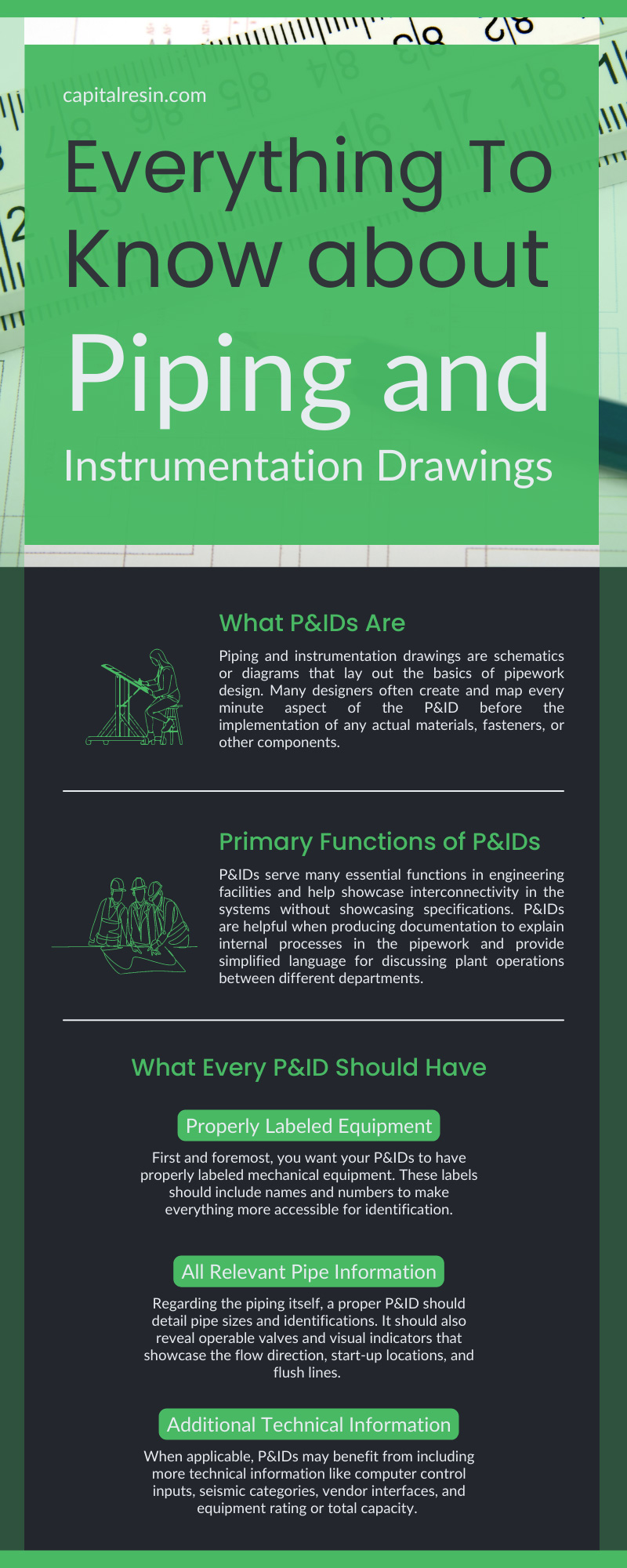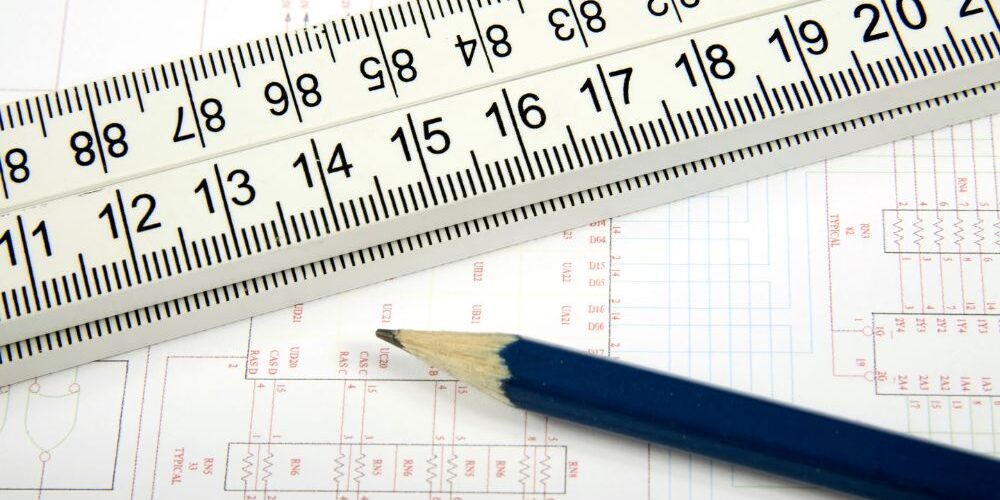Nearly every facility should have piping and instrumentation drawings. These graphs and charts may seem confusing or difficult to navigate, but they’re essential to any plant, manufacturing area, laboratory, or other commercial factory.
Piping and instrumentation drawings (P&IDs) are critical for building design, and understanding everything to know about piping and instrumentation drawings can help keep things running smoothly, safely, and efficiently. Capital Resin Corporation is here to explain what P&IDs are, how they work, why they’re so important, and how to keep them up to date for safety purposes.
What P&IDs Are
Piping and instrumentation drawings are schematics or diagrams that lay out the basics of pipework design. Many designers often create and map every minute aspect of the P&ID before the implementation of any actual materials, fasteners, or other components.
What makes P&IDs so ideal is their simplicity. The primary purpose of these documents is to explain and showcase complicated mechanisms or piping details through an easy-to-read map. P&IDs represent interconnecting pipework through straight lines, highlighting valves, connectors, labels, fasteners, and other equipment through simple, easy-to-understand symbols.
The symbols need to be easy to identify and remember and typically have a unique tag label for unambiguous identification. Common examples are triangles or arrows to indicate what direction pipes flow in or hexagons to indicate computer functions.
Overall, the P&IDs serve as the basis for what will eventually become the complete pipework system throughout construction. They are a great way to take overly complicated information and convey it through a simplified document for purposes of convenience and expedience.
Primary Functions of P&IDs
P&IDs serve many essential functions in engineering facilities and help showcase interconnectivity in the systems without showcasing specifications. P&IDs are helpful when producing documentation to explain internal processes in the pipework and provide simplified language for discussing plant operations between different departments.
A well-constructed piping and instrumentation drawing can be invaluable for developing safety standards and general guidelines for a facility. Developers and other workers may use the document as the basis for control programming or evaluating construction processes.
P&IDs are especially vital for chemical plants or other facilities that focus on chemical engineering. The early P&IDs can help create a conceptual layout that highlights spots for safety, control, and pipe design. So many factors that go into the early designs of the P&IDs become critical components in the building construction and layout.
What Every P&ID Should Have
One could argue that there isn’t an industry standard for exactly what P&IDs need to have; however, there are suggested standards from the Process Industry Practices.
Properly Labeled Equipment
First and foremost, you want your P&IDs to have properly labeled mechanical equipment. These labels should include names and numbers to make everything more accessible for identification.
All Relevant Pipe Information
Regarding the piping itself, a proper P&ID should detail pipe sizes and identifications. It should also reveal operable valves and visual indicators that showcase the flow direction, start-up locations, and flush lines. Miscellaneous features like vents, reducers, increasers, drains, sampling lines, and special fittings should also be visible and apparent on the diagram.
Additional Technical Information
When applicable, P&IDs may benefit from including more technical information like computer control inputs, seismic categories, vendor interfaces, and equipment rating or total capacity. Because P&IDs are a part of so many industries, the specific standards of what goes into one may vary greatly depending on your field. For instance, chemical engineering P&IDs may require annunciation inputs or mapped physical sequences in which the pipes or equipment work throughout intended processes.
What To Exclude From P&IDs
The primary function of your P&IDs is simplicity. You want whoever is consulting the document to get an expedient and accurate depiction of the pipe system and where everything connects. Because of these factors, you often want to leave certain information off your P&IDs, like the locations of manual switches, control relays, and flow data with pressure temperature.
A common mistake some designers make is overloading their P&IDs with extraneous notes that overexplain specific parts or pieces, which leads to a cluttered and ultimately unhelpful document. Of course, it helps to have this information readily available on a separate document. However, those consulting your P&IDs are likely looking for a simple and quick blueprint, so cluttering it with more details than necessary can defeat its purpose.
Limitations of P&IDs
While many facilities try to make their P&IDs as accurate as possible, the concept has some inherent limitations. For starters, the use of simplistic lines and shapes is great for quick reading, but it means that your P&IDs don’t work as functioning models. P&IDs may have the right information, but they may not be drawn to scale or be the most accurate on a geometric level.
Also, P&IDs may look different from company to company. They may even wind up looking different in the same company depending on internal factors such as the software used to map out the schematics or the personal whims of the designer.
Because P&IDs have some limitations, review the documentation regularly. This is especially important for making changes down the road since you want your P&IDs to be as accurate as possible.
Importance of Updating P&IDs
One of the most important aspects of everything to know about piping and instrumentation drawings is why they require regular updating. The main reason is you want the documents to be as accurate as possible. Over the years, your facility may make changes to the piping system, install new features, or redirect the flow of certain devices to other locations. Failure to update your P&IDs alongside the physical changes in your plant or factory can lead to unnecessary confusion at best and cause safety issues resulting in injury or death at worst. Keeping your P&IDs updated with new information to reflect the physical state of the facility helps ensure personnel safety and aids in workplace engineering.
Capital Resin Corporation is a chemical manufacturing company with decades of experience designing, producing, and manufacturing products for our clients. We work hard to ensure that our clients feel safe and comfortable with our science and that we deliver results in a timely manner. For more information on the services we offer or to speak with a member of our team, contact us anytime, and we’d be happy to assist you.








